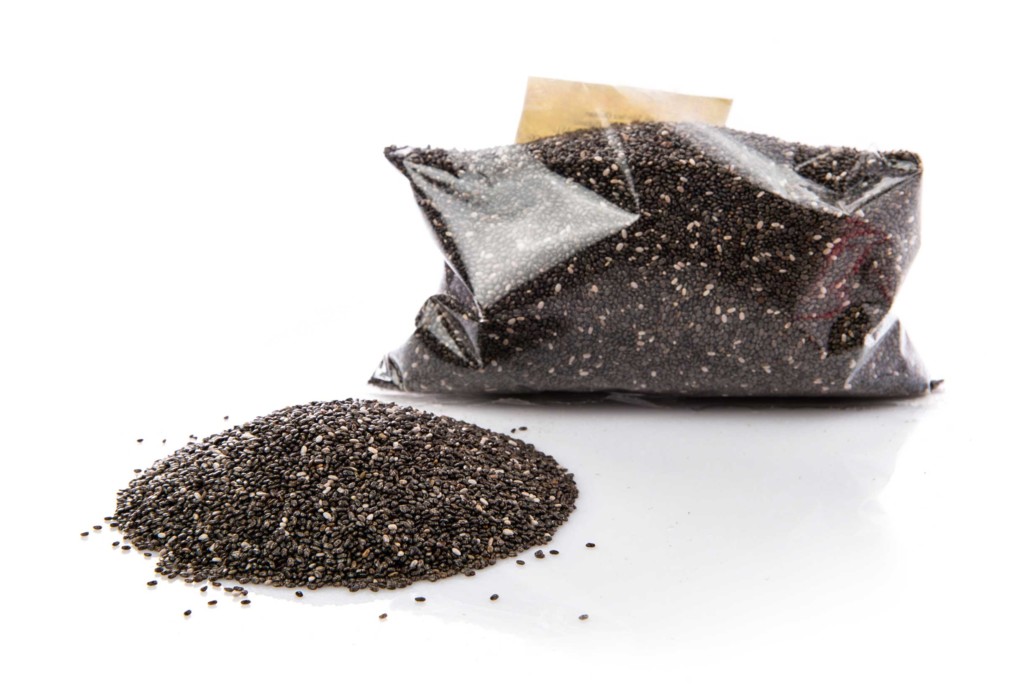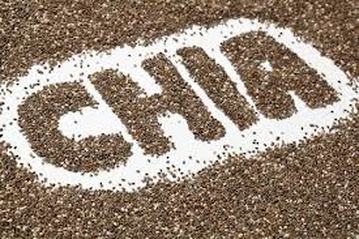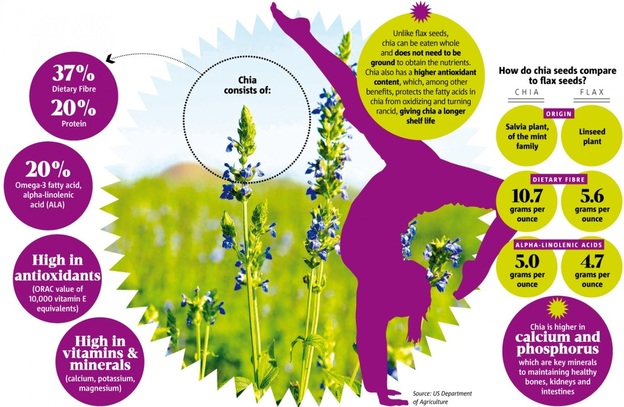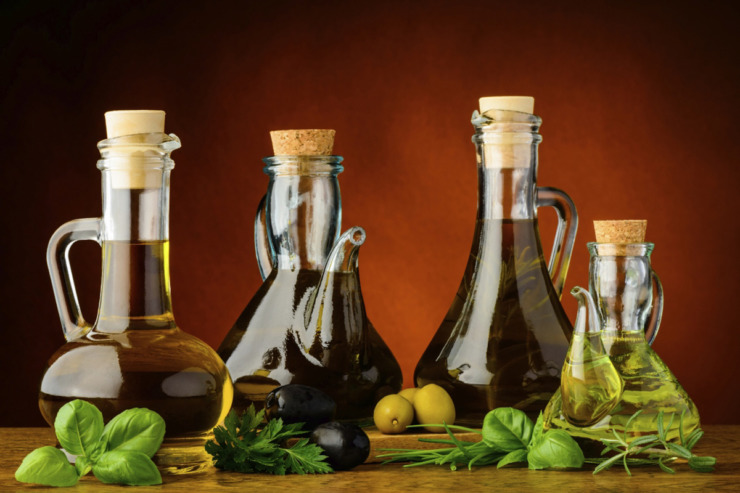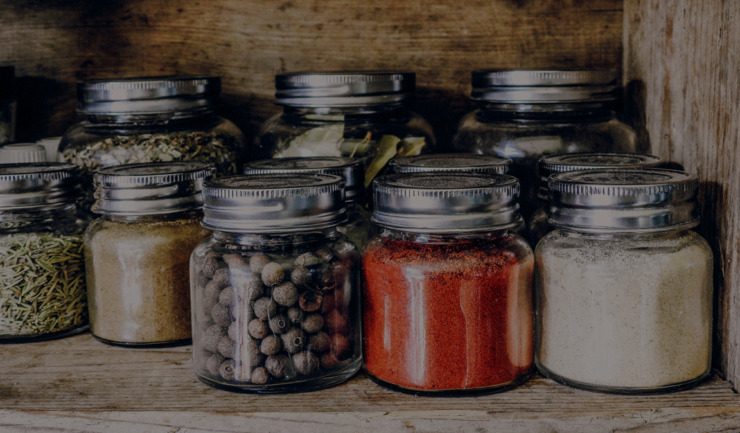MARIA VLACHAKI – NUTRITIONIST
The Chia or Salvia hispanica is a species of flowering plant that belongs to the mint family and is native to South America, Mexico and Guatemala. Chia seeds are traditionally consumed in Mexico and the Southwestern United States and are not widely known in Europe. Their cultivation was started by the ancient Mexicans in 2,600 B.C. The Aztec warriors ate Chia seeds to survive during battles. Also, the Southwest American Indians used a mixture of seeds and water to create a solid gel, which they applied to wounds to prevent infection and achieve rapid healing.
Nutrient content:
According to the USDA, 1 serving of Chia (28 grams) contains:
– 9 grams of fat
– 5 mg sodium
– 11 grams of fibre
– 4 grams of protein
– 18% of the recommended daily calcium intake
– 27% of the recommended daily intake of phosphorus
– 30% of the recommended daily intake of manganese
The content of these nutrients is found in a similar proportion in flaxseed or sesame seeds.
In 2009, the European Union approved Chia seeds as a novel food, allowing up to 5% to be added to yeast products. Chia seeds can also be added to other foods, such as smoothies, breakfast cereals, cereal bars, yoghurt, pies and bread, as well as to vegetables or rice, thus enhancing their nutritional value. The basic property of this food is to absorb up to nine times its volume in water, creating a gel, this property helps our body to stay hydrated while giving a sense of saturation.
Health benefits
– Chia seeds are gluten-free and can be eaten by patients with celiac disease (celiac disease)
– They are rich in fibre, which contributes to the proper functioning of the digestive system and the regulation of blood sugar
– Consumption of Chia seeds can lower total and LDL (bad) cholesterol, increase HDL (good) cholesterol and regulate blood pressure, a property due to their high content of omega-3 fatty acids mostly in the form of ALA (alpha linolenic acid)
– They contain complex, low glycemic index carbohydrates that regulate blood sugar levels and may be beneficial in patients with insulin resistance, glucose tolerance disorder and type II diabetes mellitus
– They are rich in antioxidants that protect our body from aging, inflammation and cancer
– Chia seeds contain an increased amount of protein (14%) compared to other plant foods, are rich in essential amino acids, especially cysteine and methionine.
– They are rich in calcium and can be used by people who cannot consume dairy products (e.g. people who are lactose intolerant or people who have decided to have a vegetarian diet) to meet their needs.
– It is an excellent nutritional supplement that can provide our body with energy after intense stress in athletes and sportsmen
Chia seeds and side effects.
– In some people Chia seeds can cause typhoid fever, this is due to their high fibre content
– Women who are pregnant or breastfeeding should consult their doctor before including Chia seeds in their diet
– People with low blood pressure are advised to avoid eating them, since they have the ability to lower blood pressure
– Great care should be taken when consuming Chia seeds by patients receiving treatment with anticoagulants or aspirin as it appears that this combination may have an increased risk of causing bleeding.
How they are consumed:
Chia seeds to be consumed should be in gel form. To make the gel you need to grind the seeds and mix 10 parts water with 1 part seeds and let them soak for about 30 minutes, stirring periodically. You can keep this gel in the refrigerator for a few days. In addition, you can use it in many recipes, add it to breakfast cereals, in juices and as a base for thickening various sauces. Finally, due to its high fat content, you can replace eggs and butter by adding gel to recipes such as cakes, cookies or other desserts.



